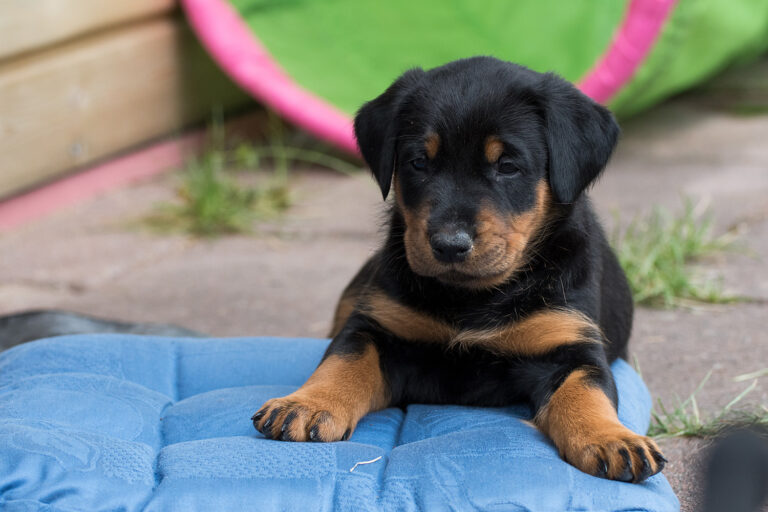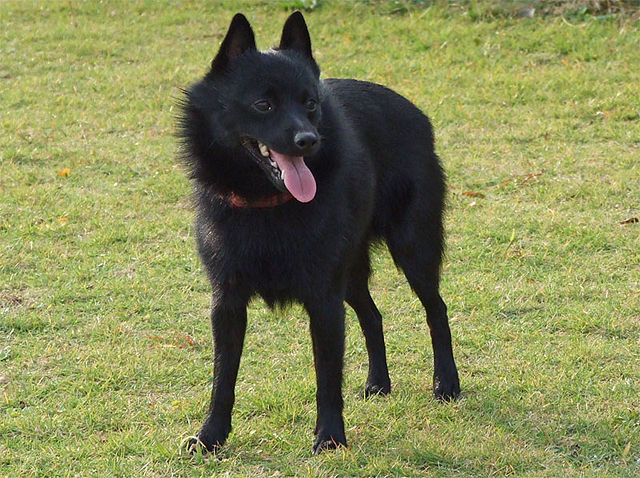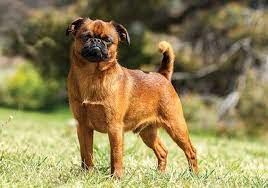What are Panda Pugs? Are They Real?
In the world of adorable dog breeds, pugs have long held a special place in the hearts of many. With their wrinkly faces, bulging eyes, and playful personalities, these little dogs have charmed their way into homes and hearts around the globe. But what happens when you take the beloved pug and give it a panda-like makeover? Enter the world of “Panda Pugs” – a topic that has sparked curiosity, controversy, and no small amount of confusion in recent years.
The Panda Pug Phenomenon
If you’ve ever scrolled through social media and come across images of what appear to be pugs with black and white markings reminiscent of giant pandas, you’re not alone. These eye-catching canines have been making waves online, leaving many to wonder: What exactly are Panda Pugs, and are they even real?
At first glance, Panda Pugs seem like they could be the result of some incredible genetic breakthrough – a perfect blend of two of the world’s most beloved animals. The idea of a dog that combines the squished face and compact body of a pug with the iconic black and white coloration of a giant panda is undeniably appealing. But as with many things that seem too good to be true, the reality of Panda Pugs is a bit more complicated.
The Truth Behind Panda Pugs
Let’s cut to the chase: Panda Pugs, as a distinct breed or a natural genetic variation of pugs, do not exist. There is no scientifically recognized breed of dog that naturally combines pug characteristics with panda-like coloration. The images you might have seen online are the result of several different factors, none of which involve actual panda DNA or natural pug variations.
So, if Panda Pugs aren’t real, what are people seeing when they come across these striking black and white dogs? There are a few explanations:
- Creative Grooming: Some of the Panda Pug images circulating online are the result of creative dog grooming. Skilled groomers can use pet-safe dyes to create panda-like patterns on light-colored pugs or similar breeds. This is a temporary effect that washes out over time.
- Digital Manipulation: In the age of advanced photo editing software, it’s easier than ever to create convincing images of animals that don’t exist in nature. Many Panda Pug pictures are simply the result of clever digital editing, combining features of pugs and pandas.
- Misidentified Breeds: Some dogs that are mistaken for Panda Pugs might actually be other breeds or mixes that naturally have black and white markings. For example, French Bulldogs or Boston Terriers with particular color patterns might be mistaken for Panda Pugs in certain photos.
- Rare Color Variations: While not creating a true “Panda Pug,” some pugs do have color variations that can create striking patterns. However, these are not the stark black and white markings seen in viral Panda Pug images.
The Science of Dog Coloration
To understand why true Panda Pugs don’t exist, it’s helpful to delve into the science of dog coat colors and patterns. Dog coat color is determined by genetics, specifically by the interaction of various genes that control the production and distribution of pigments in the hair and skin.
The two primary pigments in dog coats are eumelanin (black/brown) and phaeomelanin (red/yellow). The specific combination and expression of genes related to these pigments result in the wide variety of coat colors and patterns we see in different dog breeds.
Pugs, in particular, have a relatively limited range of natural coat colors. The most common colors recognized by breed standards are:
- Fawn (a light tan color)
- Black
- Silver
- Apricot
While pugs can sometimes have white markings, particularly on their chest, the stark black and white pattern associated with pandas is not a natural occurrence in the breed. The genes responsible for the distinctive black and white coloration of giant pandas are specific to that species and are not present in the canine genome.
Dr. Sheila Schmutz, a professor emerita at the University of Saskatchewan and an expert in animal coat color genetics, explains, “The genetic mechanisms behind coat color in dogs are complex, involving multiple genes. While we do see black and white patterns in some dog breeds, the specific panda-like pattern is not something that occurs naturally in pugs or other dog breeds.”
The Ethics of Designer Dogs
The concept of Panda Pugs touches on a broader conversation about “designer dogs” and the ethics of breeding for specific aesthetic traits. While Panda Pugs themselves aren’t a real breed, the desire for unique and eye-catching pets has led to the development of many designer dog breeds and controversial breeding practices.
Dr. James A. Serpell, professor of Ethics and Animal Welfare at the University of Pennsylvania School of Veterinary Medicine, cautions against breeding practices that prioritize appearance over health. “There’s a growing concern in the veterinary and animal welfare communities about the health issues associated with extreme breeding for aesthetic traits,” he says. “Pugs already face numerous health challenges due to their brachycephalic (flat-faced) structure. Adding additional breeding pressure for unusual coat colors or patterns could potentially exacerbate these issues.”
Indeed, pugs are known to suffer from various health problems related to their distinctive features, including:
- Breathing difficulties due to their short snouts
- Eye problems, including a higher risk of corneal ulcers
- Skin fold dermatitis
- Joint issues
The idea of creating a “Panda Pug,” even if it were possible, would likely introduce additional health risks to an already vulnerable breed.
The Allure of the Unusual
Despite the fact that Panda Pugs aren’t real, their popularity online speaks to a broader human fascination with the unusual and the cute. The combination of the pug’s endearing features with the beloved panda’s iconic coloring creates an irresistible image for many animal lovers.
This phenomenon isn’t unique to Panda Pugs. Over the years, various “fantasy” animal crossbreeds have captured the public imagination, from “Liger” (lion-tiger hybrids, which do exist in captivity) to completely fictional creations like “Cabbit” (cat-rabbit hybrids).
Dr. Hal Herzog, a professor emeritus of psychology at Western Carolina University and an expert in human-animal interactions, offers insight into this fascination: “Humans have a natural tendency to be attracted to novelty, especially when it comes to animals. Unusual animal hybrids or breeds tap into our innate love for both the familiar and the exotic. It’s a form of cognitive play that allows us to imagine new possibilities.”
The Role of Social Media
The spread of the Panda Pug myth highlights the significant role that social media plays in disseminating information – and misinformation – about animals. Platforms like Instagram, TikTok, and Facebook have become breeding grounds for viral animal content, sometimes at the expense of accuracy.
“Social media has dramatically changed how information about animals spreads,” explains Dr. Herzog. “While it can be a powerful tool for education, it also allows myths and misconceptions to proliferate rapidly. The case of Panda Pugs is a perfect example of how an appealing idea can take on a life of its own online, regardless of its basis in reality.”
This phenomenon underscores the importance of critical thinking and fact-checking when encountering unusual animal claims online. It’s always worth doing a bit of research or consulting reputable sources before accepting extraordinary claims about new animal breeds or hybrids.
The Reality of Pug Breeding
While Panda Pugs may be a fantasy, the world of pug breeding is very real and comes with its own set of challenges and controversies. Pugs have been bred for centuries for their distinctive appearance, but this breeding has also led to numerous health issues.
In recent years, there has been a growing movement among some breeders and veterinarians to promote “retro pugs” or “healthy pugs” – dogs bred to have slightly longer snouts and less extreme features while still maintaining the pug’s beloved personality traits. These efforts aim to address some of the health concerns associated with traditional pug breeding.
Dr. Rowena Packer, a lecturer in Companion Animal Behaviour and Welfare Science at the Royal Veterinary College, has conducted extensive research on brachycephalic dog breeds. She notes, “While people are often drawn to the flat-faced appearance of pugs, it’s crucial to prioritize health and welfare in breeding practices. We’re seeing encouraging steps towards breeding for healthier conformations, but there’s still work to be done.”
The Appeal of Pugs
Despite the health concerns and the non-existence of true Panda Pugs, the enduring popularity of pugs speaks to their charming personalities and the strong bonds they form with their human companions. Pug owners often describe their dogs as affectionate, playful, and full of character.
Sarah Thompson, a pug owner and enthusiast, shares her experience: “There’s just something special about pugs. They have this way of making you laugh even on your worst days. My pug, Milo, is like a little clown – always ready with a silly expression or a goofy antic. I can see why people might be drawn to the idea of a Panda Pug, but honestly, pugs are perfect just the way they are.”
Conclusion – Are panda pugs real?
In the end, while Panda Pugs may capture our imagination, they remain in the realm of fantasy. The reality of dog breeding and genetics doesn’t allow for the simple mixing of pug and panda characteristics. However, the popularity of this concept speaks to our enduring love for both pugs and pandas, and our human tendency to find joy in unique and unexpected combinations.
Rather than chasing after mythical breeds, prospective dog owners would do well to appreciate the wonderful diversity of existing dog breeds and mixed-breed dogs available for adoption. Each dog, whether purebred or mixed, comes with its own unique blend of characteristics and personality traits.
For those truly enamored with the Panda Pug aesthetic, there are always options for creative and temporary transformations through safe grooming practices. Just remember that at the end of the day, it’s the dog’s health, personality, and the bond you share that truly matter – not whether they look like a panda.
As we navigate the often confusing world of viral animal content online, it’s crucial to approach unusual claims with a blend of wonder and skepticism. While it’s fun to imagine fantastical animal crossbreeds, it’s equally important to appreciate and protect the incredible diversity of real animals that share our world.
Panda Pugs may not be real, but the joy, companionship, and love that actual pugs and other dogs bring to our lives are very real indeed. And in the end, isn’t that what truly matters?





